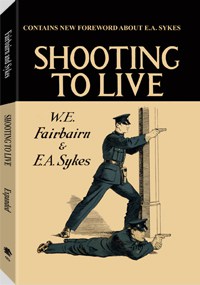Knowledge to make your life better. If you have some free time, check out some of these links this weekend.
Seven Habits Of Highly Dangerous People
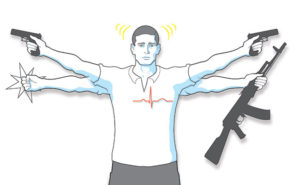
“It does not matter if you used to be a Grand Master pistol shooter or a black belt Judoka, if you have not maintained a baseline of skill, you are failing. Practice. Don’t just think about being vigilant after a terror attack, be vigilant every damn day. Don’t just workout when your pants get too tight, workout every damn day. Don’t just lock your doors and windows after hearing about burglaries in your neighborhood, lock them every damn day. And lastly, if you have the legal means to do so, don’t just carry a gun after reading a frightening headline, carry it EVERY. DAMN. DAY. In the words of the late, great Pat Rogers, “The car is not a holster. Carry your f***ing gun. All the f***ing time.”
Situational Awareness – How To Determine Who Has It and Who Doesn’t
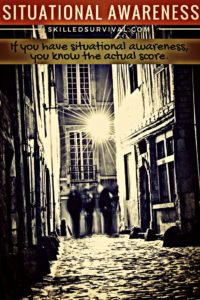
The writing in this article is a little disjointed and poorly organized, but it contains some useful ideas.
Safety in Airports and Other Non-Permissive Environments
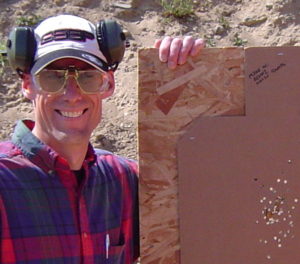
Airport safety advice from the Armed Citizen Legal Defense Network. For what it’s worth, this is the only “self defense insurance” organization to which I belong.
The Mind Control Tactics Used Within Facebook

Although this article was written for the “tin foil hat” crowd, the information it contains is useful. You should know how you are being manipulated by the social media networks you use.
The Ultimate Guide to Pistol Mounted Red Dot Sights
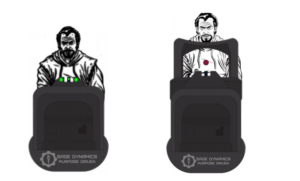
A faster-reading summary of the Sage Dynamics red dot pistol study I shared with you a few weeks ago.
A Critical Look at the New York Reload
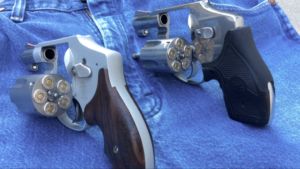
If you carry a revolver as a primary defensive weapon, transitioning to a second gun when the revolver runs out of bullets is usually faster than reloading the primary. That isn’t always the case with an autopistol. It depends on how you are carrying your spare magazine and where you are carrying your spare gun. Sometimes a reload is faster than digging out a deeply concealed second gun.
Get a shot timer and do the work. Figure out which option is best for you.
Radford University: Majority of new serial killers are black
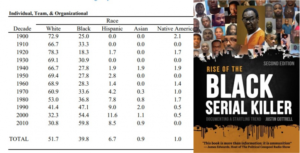
Challenging the commonly held belief that the majority of serial killers are Caucasian.
Pro-Second Amendment healthcare provider sign up

I’ve heard many complaints from friends and readers about having problems with anti-gun physicians. The Doctors for Responsible Gun Ownership organization is attempting to establish a pro-gun medical professional referral list. At this point they are recruiting doctors to join. I know that a lot of physicians read my page and take my classes. This might be a nice way to get some good exposure and grow your business.
I will publish the list for patients once DRGO releases it.
Profiles of Individual Radicalization in the United States (PIRUS)

Interesting data about the political motivations and characteristics of individual radicalized terrorists in the USA.
When it Comes to Staged Firearms: Organized and Uncluttered is Faster
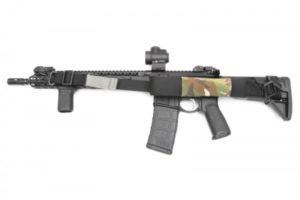
Read this story about how a loose rifle sling complicated access during a defensive situation. This happens quite regularly. The officer who stopped the Sikh Temple Shooting was delayed when his rifle sling snagged on his cruiser computer. Slings are a necessary accessory, but they have to be tamed so that they don’t cause problems getting hung up on other gear or equipment.
Handgun Ready Positions
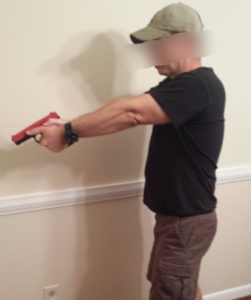
A quick review of the three most commonly taught handgun ready positions. I believe all three are useful. I also think you should practice quickly acquiring your target and firing from each of them. If you want to learn some more about pistol ready positions, you’ll want to check out this article from Ralph Mroz.
Why You Need a Cash Cache

With the recent natural disasters in mind, it’s obvious that cash money is a valuable survival supply. Credit cards and ATMs don’t work when the power is out. How long could you and your family survive if you couldn’t use credit cards or access your bank for cash? For many people, the answer is “not long.” I hope my readers are smarter about this.
You need a stash of hidden and secure cash in your house. I would advise splitting your cash between several different hidden caches in different rooms in your home. The author of this article says that his emergency cash fund is $300. Personally, I would rather add an extra zero to that number to feel more comfortable. Three hundred dollars disappear rather quickly after an emergency when a case of bottled water is priced at $47.99.
Obviously, your personal finances will dictate how much you might want to save, but I would always err on the side of having more cash rather than less cash. In a true emergency, you will be very glad to have some extra money on hand.
My personal emergency cash fund isn’t solely dedicated for emergencies. I just divert some of my savings for other purposes and store the money in cash at home rather than in the bank. My “emergency cash cache” is actually money I have earmarked towards buying a new(er) car. I’m not a big fan of debt and refuse to take out a loan to buy a car. Instead, I buy used cars with cash. I haven’t had a car payment in 15 years. I save a little bit of every paycheck for my “car fund.” When I need a new car, I’ll have enough cash to buy one. Until then, some of my “car fund” is stored safely hidden in my house and does double duty as an “emergency fund” in the event of some kind of disaster.
I would strongly suggest that you implement a similar plan and have some money set aside in cash and stored at your home.
If I haven’t convinced you, read 6 Reasons to Carry Cash Before an Emergency. You may also be interested in How Much Cash Would You Need After a Terrorist Attack?
Everything Changes When You Survive a Shooting
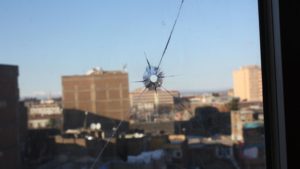
Some people discuss how being shot at has changed their lives:
“The first time I got shot at I woke up to the fact that the world’s fucked and we are all just going to die sometime and that’s it,”
The MARCH Algorithm in Tactical Combat Casualty Care
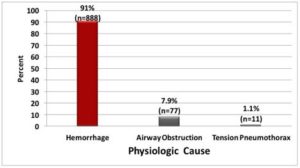
A nice review for anyone who has taken one of my medical classes. If you have never heard of the “MARCH” protocols, you have some learning to do. I’d love to see you at an upcoming tactical first aid class.
Behave: The Biology of Humans at Our Best and Worst
What I’m reading….
This is a dense book and likely isn’t for most of you. It’s 800 pages of biological and neurological research about how humans make decisions. It’s an important concept for instructors to understand. If we don’t understand the processes by which our student come to a decision, how do we teach those students to make better decisions in a defensive context?
Start Shooting Better: 5×5 Drill

Chris Baker and John Johnston provide their take on the 5X5 drill. This is a fundamental baseline evaluation. I use it in all my first level handgun classes. You would be absolutely stunned if you knew how many people who have carried a gun for decades but cannot pass this simple test. It’s the first shooting drill I do in my introductory handgun class. I would guess that only about 25% of the students in my classes actually passed the test when shot cold (without any “warmup” shots or drills) on the first try.
Dispelling Myths of the 12 Gauge Shotgun
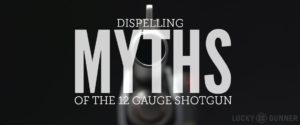
One more Lucky Gunner article for you this week. This article does a fine job dispelling some of the myths around using a shotgun for “social work.”
“In my first shooting, the two carjackers I was up against both told investigators individually in interviews that they heard me rack my Remington 870 as I exited my car. The effect it had was exactly nothing.”
The death of reading is threatening the soul

“Here’s the simple truth behind reading a lot of books,” says Quartz: “It’s not that hard. We have all the time we need. The scary part—the part we all ignore—is that we are too addicted, too weak, and too distracted to do what we all know is important.”
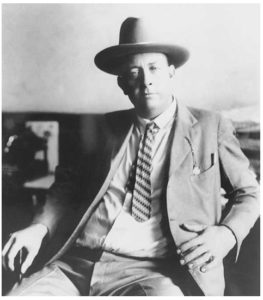
Frank Hamer is one of the most legendary gunfighters in the history of art. This article describes one of his lesser-known gunfights where he was shot three times and still killed one of his assailants. This gunfight and all of his others are described in the brilliant book Texas Ranger: The Epic Life of Frank Hamer, the Man Who Killed Bonnie and Clyde.
A Look Back at the M1 Carbine
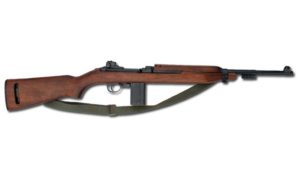
Some background history about the venerable M1 Carbine. I really like this little gun. It has no recoil and is very light, making it an ideal defensive weapon for someone who is physically weak or has shorter arms. Younger teens who can’t yet hold up an AR-15 usually do really well with the little .30 carbine.
Get a real US military surplus rifle. The commercial versions made by Plainfield and Universal almost always have reliability issues. I haven’t heard many good things about the new model commercial Inland guns either. The 15 round magazines almost always feed more reliably than the 30-round mags.
Is It Really That Hard To Kill? — Thoughts on Marshall’s Assertion That Only 25% Of WWII Soldiers Would Fire On The Enemy
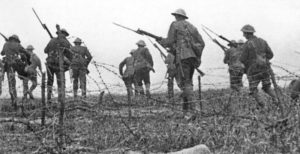
A strong rebuttal to the “research” of S.L.A. Marshall (more commonly echoed by Lt. Col. Dave Grossman) concluding that humans have an innate repulsion against killing another human.
Skills You Need
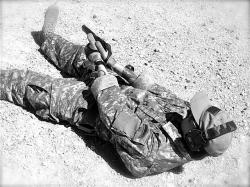
“Understanding the fundamentals is mandatory. You also have to learn how to apply them under any circumstances. As always, the best way to practice the majority of your fighting skills are with dummy weapons and ammo. These tools allow you to practice safely, developing the ability to perform these actions efficiently and safely. The same principles apply to rifle and shotgun. Remember, it’s difficult to acquire new skills in the middle of the fight. Start practicing now, so you’re prepared for the future.”
Book Review (Historical Handgun) – Shooting To Live (1942, Fairbairn & Sykes)
A very good book review from Karl Rehn. I often talk about Sykes and Fairbairn in my close quarters gunfighting class. I’m perpetually astonished when NONE of the students in my class have ever heard of this book or its authors. These guys were truly innovative and were the premier firearms trainers in the world in their time.
When I was growing up in the 1970s and 1980s, I was obsessed with learning how to shoot better. I read every book I could get my hands on about the topic. Unfortunately, back then there was no internet and a relatively small number of combat shooting books had been published. I devoured the historical books like this one, Bill Jordan’s “No Second Place Winner,” Applegate’s “Kill or Get Killed,” and everything both Skeeter Skelton and Elmer Keith ever wrote. Those books gave me a good grounding in combative shooting history. I studied them because there was nothing else to read on the topic.
It seems that even though we have all the information ever created by mankind at our fingertips with the internet, some of the important historical background in our art isn’t being consumed by the younger participants. You can start remedying that by reading “Shooting to Live.”
Guard Ambushed for His Sidearm
No, your openly carried gun is not a crime deterrent. Yes, your openly carried gun can be a target for some criminals. Don’t open carry in public.
MOA vs Mil
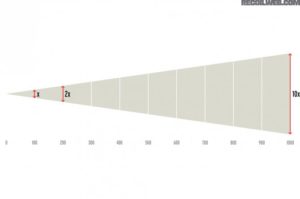
A thorough schooling in the difference between minute of angle and milliradian adjustments on rifle scopes.
The Legalities of SilencerCo’s Maxim 50
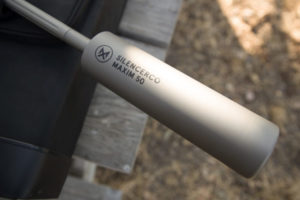
The firearms world was abuzz this week with news of the introduction of SilencerCo’s new integrally suppressed “non-firearm” .50 muzzle loader that can be shipped directly to your door with no ATF paperwork for either the gun or the suppressor. This article explains the legal loopholes the company used to get this rifle out in the marketplace.
Some of the above links (from Amazon.com) are affiliate links. If you purchase these items, I get a small percentage of the sale at no extra cost to you.


